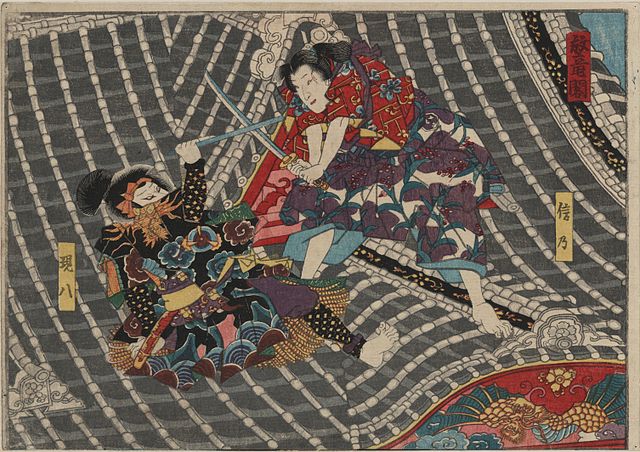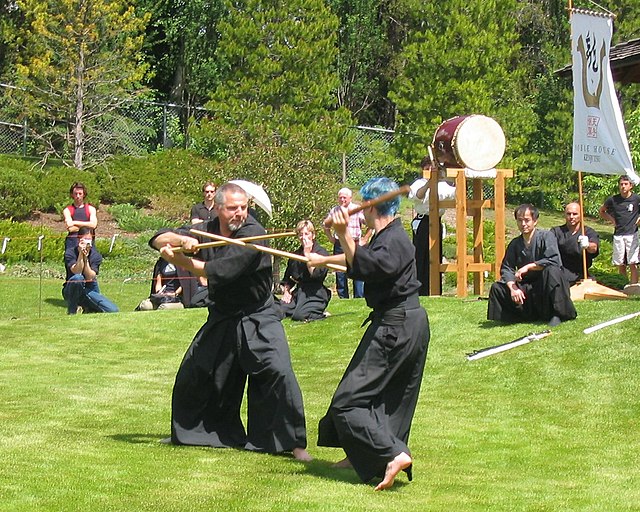Sasaki Kojirō was a Japanese swordsman who may have lived during the Azuchi–Momoyama and early Edo periods and is known primarily for the story of his duel with Miyamoto Musashi in 1612, where Sasaki was killed. Although suffering from defeat as well as death at the hands of Musashi, he is a revered and respected warrior in Japanese history and culture. Later Miyamoto proclaimed that Sasaki Kojirō was the strongest opponent he faced in his life.
Kabuki actor Ohtani Tomoemon as Sasaki in the ill-fated duel with Miyamoto Musashi at Ganryu Island.
Kenjutsu (剣術) is an umbrella term for all (ko-budō) schools of Japanese swordsmanship, in particular those that predate the Meiji Restoration. Some modern styles of kendo and iaido that were established in the 20th century also included modern forms of kenjutsu in their curriculum. Kenjutsu, which originated with the samurai class of feudal Japan, means "methods, techniques, and the art of the Japanese sword". This is opposed to kendo, which means "the way of the sword" and uses a bamboo sword (shinai) and protective armour (bōgu).
Woodblock print by Utagawa Kunisada I (unsigned, the print is the upper part of a "two scenes" print; only the lower part is signed).The actors Seki Sanjūrō III and Bandō Shūka I as Inukai Genpachi and Inuzuka Kiba in a stage adaptation of Satomi Hakkenden, performed at the Ichimura theatre in 1852.
An example of modern nitōjutsu practice.



